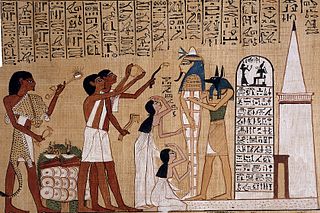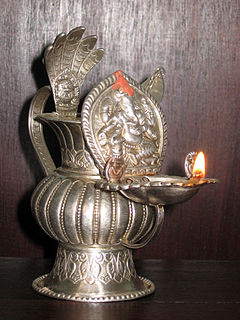 W
WA ceremony is a unified ritualistic event with a purpose, usually consisting of a number of artistic components, performed on a special occasion.
 W
WIn the Roman Empire during Late Antiquity, the adventus was a ceremony held to celebrate the arrival at a city of a Roman emperor or other dignitaries. The imperial adventus was the period's "ceremonial par excellence", celebrating both the emperor's arrival and the blessing of the imperial presence itself on the city's security. The term is also used to refer to artistic depictions of such ceremonies.
 W
WThe Annual Customs of Dahomey were the main yearly celebration in the Kingdom of Dahomey, held at the capital, Abomey. These ceremonies were largely started under King Agaja around 1730 and involved significant collection and distribution of gifts and tribute, religious ceremonies involving human sacrifice, military parades, and discussions by dignitaries about the future for the kingdom.
 W
WA baby shower is a party of gift-giving or a ceremony that has different names in different cultures. It celebrates the delivery or expected birth of a child or the transformation of a woman into a mother.
 W
WA balloon release is a ceremonial event in which a number of hydrogen- or helium-filled balloons are unleashed into the sky. Balloon releases can be done as a prayer ceremony, to create a photo opportunity, to raise awareness of a cause or campaign, or as a competitive long-distance race.
 W
WBlót is the term for "blood sacrifice" in Norse paganism. A blót could be dedicated to any of the Norse gods, the spirits of the land, and to ancestors. The sacrifice involved aspects of a sacramental meal or feast.
 W
WBurial at sea is the disposal of human remains in the ocean, normally from a ship or boat. It is regularly performed by navies, and is done by private citizens in many countries.
 W
WCashiering, generally within military forces, is a ritual dismissal of an individual from some position of responsibility for a breach of discipline.
 W
WThe Casing of the Colors is a traditional ceremony held by United States Army commands, brigades and regiments as well as United States Marine Corps units. Each of these units have unique flags referred to as "colors" which are carried by the color guards to represent the unit at military ceremonies.
 W
WCelebrancy is a cultural profession founded in Australia on the 16th July 1973 by the Australian statesman and then commonwealth Attorney-General Lionel Murphy. The aim of the celebrancy program was to authorise persons to officiate at secular ceremonies of substance, meaning and dignity mainly for non-church people. Up until this point legal marriages were reserved only to clergy or officers of the Births, Deaths & Marriages registry office. These appointed persons, referred to in the Marriage Act of Australia as "authorised celebrants", create & conduct weddings, funerals, namings, house dedications, coming of age and other life ceremonies for those who do not wish to be married or have other ceremonies in a church or registry office.
 W
WA ceremonial mace is a highly ornamented staff of metal or wood, carried before a sovereign or other high officials in civic ceremonies by a mace-bearer, intended to represent the official's authority. The mace, as used today, derives from the original mace used as a weapon. Processions often feature maces, as on parliamentary or formal academic occasions.
 W
WA ceremonial weapon is an object used for ceremonial purposes to display power or authority. They are often used in parades and as part of dress uniforms.
 W
WA change of command is a military tradition that represents a formal transfer of authority and responsibility for a unit from one commanding or flag officer to another. The passing of colors, standards, or ensigns from an outgoing commander to an incoming one ensures that the unit and its soldiers is never without official leadership, a continuation of trust, and also signifies an allegiance of soldiers to their unit's commander.
 W
WIn military organizations, a colour guard is a detachment of soldiers assigned to the protection of regimental colours and the national flag. This duty is so prestigious that the colour is generally carried by a young officer (Ensign), while experienced non-commissioned officers are assigned to the protection of the flag. These NCOs, accompanied sometimes by warrant officers, can be ceremonially armed with either sabres or rifles to protect the colour. Colour guards are generally dismounted, but there are also mounted colour guard formations as well.
 W
WThe cornerstone is the first stone set in the construction of a masonry foundation. All other stones will be set in reference to this stone, thus determining the position of the entire structure.
 W
WThe Dísablót was the blót which was held in honour of the female spirits or deities called dísir, from pre-historic times until the Christianization of Scandinavia. Its purpose was to enhance the coming harvest. It is mentioned in Hervarar saga, Víga-Glúms saga, Egils saga and the Heimskringla. The celebration still lives on in the form of an annual fair called the Disting in Uppsala, Sweden.
 W
WA divorce party is a ceremony that celebrates the end of a marriage or civil union. They can involve either one or both members of the separating couple. Divorce parties have been called the final frontier in the wedding industry complex, and often involve a toast that emphasizes the couple beginning new chapters in their lives.
 W
WThe first haircut for a human has special significance in certain cultures and religions. It can be considered a rite of passage or a milestone.
 W
WThe Flag Raising Ceremony is a traditional military ceremony of the People's Liberation Army of China which is done publicly on Tiananmen Square in the capital of Beijing. The ceremony is conducted by the PLA's Beijing Garrison Honor Guard Battalion, which is part of the 1st Guard Division, Central Theater Command. It is done daily precisely at sunrise, with notable ceremonies taking place on National Day of the People's Republic of China in October and New Year's Day in January.
 W
WA funeral is a ceremony connected with the final disposition of a corpse, such as a burial or cremation, with the attendant observances. Funerary customs comprise the complex of beliefs and practices used by a culture to remember and respect the dead, from interment, to various monuments, prayers, and rituals undertaken in their honor. Customs vary between cultures and religious groups. Funerals have both normative and legal components. Common secular motivations for funerals include mourning the deceased, celebrating their life, and offering support and sympathy to the bereaved; additionally, funerals may have religious aspects that are intended to help the soul of the deceased reach the afterlife, resurrection or reincarnation.
 W
WFunerary Helmets, Mortuary Helms, or Mort Helms were the major element of a suit of armour that was most often placed above or near the carved memorial effigy of the knights or members of the nobility concerned in a tradition that ran from at least the 14th through to the 17th century, particularly when the person concerned had gained a reputation in life as a warrior. These helmets were often brightly painted or otherwise ornamented with floral designs, etc. Largely located within rural churches and other religious buildings, the practice was especially common in the south-west English counties and Cornwall with only a few examples known from Scotland.
 W
WA gender-reveal party is a party held during pregnancy to reveal the baby's sex to the expectant parents, family, and friends. Prenatal sex discernment technology furnishes the necessary information. The practice originated in the United States during the late 2000s.
 W
WGraduation is the award of academic degree, or the ceremony that is sometimes associated with it. The date of the graduation ceremony is often called graduation day.
 W
WGroundbreaking, also known as cutting, sod-cutting, turning the first sod or a sod-turning ceremony, is a traditional ceremony in many cultures that celebrates the first day of construction for a building or other project. Such ceremonies are often attended by dignitaries such as politicians and businessmen. The actual shovel used during the groundbreaking is often a special ceremonial shovel, sometimes colored gold, meant to be saved for subsequent display and may be engraved. In other groundbreaking ceremonies, a bulldozer is used instead of a shovel to mark the first day of construction. In some groundbreaking ceremonies, both the shovel and the bulldozer are used to mark the first day of construction.
 W
WHomage in the Middle Ages was the ceremony in which a feudal tenant or vassal pledged reverence and submission to his feudal lord, receiving in exchange the symbolic title to his new position (investiture). It was a symbolic acknowledgement to the lord that the vassal was, literally, his man (homme). The oath known as "fealty" implied lesser obligations than did "homage". Further, one could swear "fealty" to many different overlords with respect to different land holdings, but "homage" could only be performed to a single liege, as one could not be "his man" to more than one "liege lord".
 W
WA humanist celebrant or humanist officiant is a person who performs humanist celebrancy services, such as non-religious weddings, funerals, child namings, coming of age ceremonies and other rituals. Some humanist celebrants are accredited by humanist organisations, such as Humanists UK, Humanist Society Scotland (HSS), The Humanist Society (US), and the Humanist Association of Canada (HAC).
 W
WIvy Day is an annual ceremony in which an ivy stone is placed on either a residential, academic or administrative building or ground to commemorate academic excellence. The ceremony is most known for being practiced among older colleges in the Northeastern United States. It is most associated with the Ivy League and a group of small liberal arts college known as the Little Ivies. Some institutions announce members of Phi Beta Kappa and specialized honor designations for students. Some classes donate to the college, in the form gates, facades, and door outlines, by inscribing or creating their own version of symbolic icons of the college's seal or other prominent insignia. The ivy stones are usually decorated with the graduation date and a symbol that represents the college as a whole or the class as a whole. The most common ivy stone is one-by-two feet and is usually made out of workable stone.
 W
WThe "Last Post" is either an A or a B♭ bugle call, primarily within British infantry and Australian infantry regiments, or a D or an E♭ cavalry trumpet call in British cavalry and Royal Regiment of Artillery, and is used at Commonwealth military funerals, and ceremonies commemorating those who have lost their lives in war.
 W
WA mandala is a geometric configuration of symbols. In various spiritual traditions, mandalas may be employed for focusing attention of practitioners and adepts, as a spiritual guidance tool, for establishing a sacred space and as an aid to meditation and trance induction. In the Eastern religions of Hinduism, Buddhism, Jainism and Shintoism it is used as a map representing deities, or especially in the case of Shintoism, paradises, kami or actual shrines. A mandala generally represents the spiritual journey, starting from outside to the inner core, through layers.
 W
WMilitary rites are honors presented at a funeral for a member of a military or police force. These rites, which are performed (usually) at the burial, include the firing of rifles, presenting of a flag and or bugle calls. In Australia and New Zealand a Poppy Service is often held for members of the Armed Forces. This includes a short reading by a member of the Returned Services League of Australia or, in New Zealand, the Returned Services Association, the laying of red poppies on the coffin by all present, the playing of the Last Post, Reveille, and recitation of the Ode of Remembrance.
 W
WA military tattoo is a performance of music or display of armed forces in general. The term comes from the early 17th-century Dutch phrase doe den tap toe, a signal sounded by drummers or trumpeters to instruct innkeepers near military garrisons to stop serving beer and for soldiers to return to their barracks, and is unrelated to the Tahitian origins of an ink tattoo.
 W
WAn opening ceremony, grand opening, or ribbon-cutting ceremony marks the official opening of a newly-constructed location or the start of an event. Opening ceremonies at large events such as the Olympic Games, FIFA World Cup, and the Rugby World Cup might involve thousands of participants and be watched worldwide. Such tournaments often also include a closing ceremony at the end of the event.
 W
WPoland's Wedding to the Sea was a ceremony meant to symbolize restored Polish access to the Baltic Sea that was lost in 1793 by the Partitions of Poland. It was first performed on 10 February 1920 by General Józef Haller at Puck (Putzig). In the early spring of 1945, following the Polish-Soviet advance into Pomerania, a number of such ceremonies took place in several locations. The most famous 1945 Weddings to the Sea were performed by the soldiers of the Polish Army on 17 March 1945 in Mrzeżyno (Regamünde), and on 18 March in the newly-captured port of Kołobrzeg (Kolberg).
 W
WThe Posting of the Colors is a practice conducted by military color guards of the United States at the beginning of a particular ceremony. The practice is also done by the Boy Scouts of America. Posting the colors requires that a color guard team move the colors from a carried position and placed into a stand. This formality is normally done at events such as graduation ceremonies and public events. Specifically, it is done prior to the playing of the "The Star-Spangled Banner" or the reciting of the Pledge of Allegiance. In that case, the color guard will present arms once the colors have been posted.
 W
WA pōwhiri is a Māori welcoming ceremony involving speeches, cultural performance, singing and finally the hongi. It is used to both welcome guests onto a marae or during other ceremonies, such as during a dedication of a building. A pōwhiri may not be performed for every group of manuhiri (visitors); a mihi whakatau may be used instead. A pōwhiri is often used for special visitors or for tūpāpaku for a tangihanga (funeral). However, a pōwhiri are also often performed for tourist groups as part of special events.
 W
WPoy sang long is a rite of passage ceremony among the Shan peoples, in Myanmar and in neighbouring northern Thailand, undergone by boys at some point between seven and fourteen years of age. It consists of taking novice monastic vows and participating in monastery life for a period of time that can vary from a week to many months or more. Usually, a large group of boys are ordained as sāmaṇera at the same time.
 W
WA procession is an organized body of people walking in a formal or ceremonial manner.
 W
WThe Prussian Homage or Prussian Tribute was the formal investment of Albert of Prussia as duke of the Polish fief of Ducal Prussia.
 W
WPublic duties are performed by military personnel, and usually have a ceremonial or historic significance rather than an overtly operational role.
 W
WA release dove, also called a white pigeon, is a domestic rock dove bred for small size and white coloration that is released during events, such as public ceremonies, weddings and funerals. They can be used as symbols at these places.
 W
WA rite of passage is a ceremony or ritual of the passage which occurs when an individual leaves one group to enter another. It involves a significant change of status in society. In cultural anthropology the term is the Anglicisation of rite de passage, a French term innovated by the ethnographer Arnold van Gennep in his work Les rites de passage, The Rites of Passage. The term is now fully adopted into anthropology as well as into the literature and popular cultures of many modern languages.
 W
WSagun is a Nepalese ceremony which involves ritualized presentation of auspicious food to a person to invoke good fortune and show respect. It is a highly revered ceremony in Newar society of the Kathmandu Valley. The food items served are boiled egg, smoked fish, meat, lentil cake and rice wine which represent Tantric concepts.
 W
WSanskara are rites of passage in a human being's life described in ancient Sanskrit texts, as well as a concept in the karma theory of Indian philosophies. The word literally means "putting together, making perfect, getting ready, to prepare", or "a sacred or sanctifying ceremony" in ancient Sanskrit and Pali texts of India.
 W
WA signing ceremony is a ceremony in which a document of importance is signed (approved). Typically the document is a bill passed by a legislature, thus becoming a law by an executive's signature. However, the document may also be, for example, an executive order, international agreement, or a veto statement that invalidates a legislative measure.
 W
WThe Stripping of the Altar or the Stripping of the Chancel is a ceremony carried out in many Anglican, Catholic, Lutheran and Methodist churches on Maundy Thursday.
 W
W"Sunset", also known as the "Retreat Call", is a bugle call played in United Kingdom and British Commonwealth countries to signal the end of the official military day. In common with all bugle calls, it consists only of notes from a single overtone series. This allows it to be playable on a bugle or equivalently on a trumpet without moving the valves.
 W
WA Tjurunga, also spelt Churinga and Tjuringa, is an object considered to be of religious significance by Central Australian Aboriginal people of the Arrernte groups. Tjurunga often had a wide and indeterminate native significance. They may be used variously in sacred ceremonies, as bullroarers, in sacred ground paintings, in ceremonial poles, in ceremonial headgear, in sacred chants and in sacred earth mounds.
 W
WIn building construction, topping out is a builders' rite traditionally held when the last beam is placed atop a structure during its construction. Nowadays, the ceremony is often parlayed into a media event for public relations purposes. It has since come to mean more generally finishing the structure of the building, whether there is a ceremony or not. Also commonly used to determine the amount of wind on the top of the structure.
 W
WA wetdown is a ritual celebrated by many volunteer fire departments in the United States in which squads of firefighters from neighboring towns ritualistically commission a new fire apparatus by anointing it with water sprayed from the visitors' firefighting equipment.
 W
WThe white coat ceremony (WCC) is a ritual in some schools of medicine and other health-related fields that marks the student's transition from the study of preclinical to clinical health sciences. At some schools, where students begin meeting patients early in their education, the white coat ceremony is held before the first year begins. It is an example of a matriculation. The ritual is a recent invention, first being popularized in the 1990s.
 W
WA wreath is an assortment of flowers, leaves, fruits, twigs, or various materials that is constructed to form a ring.